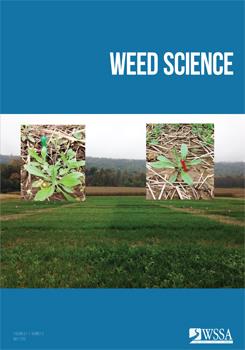Five populations of rigid ryegrass (LoliumrigidumGaudin) fromfields across cropping regions in southern Australia were suspected of having resistance to thiocarbamates, chloroacetamides, and sulfonylisoxazoline herbicides. Resistant (R) populations 375-14, 198-15, 16.2, EP162, RAC1, and A18 and two susceptible (S) populations (SLR4 and VLR1) were included in a dose–response study. All suspected R populations expressed resistance to one or all herbicides (thiocarbamates, chloroacetamides, and pyroxasulfone). Population 198-15 exhibited the highest LD50 to triallate (44.7-fold), prosulfocarb (45.7-fold), S-metolachlor (31.5-fold), and metazachlor (27.2-fold) compared with the S populations. Populations 198-15 and 375-14 were also resistant to pyroxasulfone (13.5- and 14.9-fold) compared with the S populations, as was population EP162. This study documents the first case of field-evolved resistance to thiocarbamate, chloroacetamide, and sulfonylisoxazoline herbicides in L. rigidum.
How to translate text using browser tools
30 May 2019
Resistance to Very-Long-Chain Fatty-Acid (VLCFA)-Inhibiting Herbicides in Multiple Field-Selected Rigid Ryegrass (Lolium rigidum) Populations
David J. Brunton,
Peter Boutsalis,
Gurjeet Gill,
Christopher Preston
ACCESS THE FULL ARTICLE

Weed Science
Vol. 67 • No. 3
May 2019
Vol. 67 • No. 3
May 2019
chloroacetamides
cross-resistance
Herbicide resistance
multiple resistance
PRE herbicides
sulfonylisoxazoline
thiocarbamates





